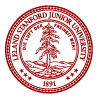Laptop Audio Workstations
There are several multi-channel laptop workstations in the Knoll. One in the Ballroom computer cluster (Room 216), one in the 2nd Floor Grad Area (Room 201), and one in Grand Central Station (Room 209). Each is equiped with a USB soundcard and 4 speakers configured for easy connection to your laptop. Quad Speaker SystemEach station has four Adam A3X studio monitor speakers. The volume levels have been set for you, so you shouldn't have to adjust them.USB SoundcardEach station has a UA-101 USB soundcard. The Cakewalk UA-101 is a USB professional audio interfase. It connects to a computer thorugh USB2 and has 8 channels of analog I/O (up to 192KHz / 24 bit), SP/DIF and MIDI input / output connections. Two front panel inputs include good quality microphone preamps. The UA-101 can be used from Windows, OSX and Linux. See below for a link to a local copy of the manual (only available for logged in users).
Driver installationIf you are running a flavor or Windows or OSX in your computer you will need to install a driver before connecting your laptop to the soundcard. No driver is needed if you are running Linux.Go to the Cakewalk Driver Download site for the UA-101, agree to the licensing terms, and download the appropriate driver for your operating system and version. Install the driver by following the instructions in the download page (there are drivers available for the 32 and 64 bit versions of Windows 7 and Vista, the 32 bit version of Windows XP and for OSX Snow Leopard -10.6- and previous versions -10.4 and 10.5). Changing the Sampling RateUse the "SAMPLE RATE" switch in the front panel to specify the sample rate at which you want to record and play back audio data. If you change the setting of this switch, you must exit all software, switch off the UA-101 (use the "OUTPUT/POWER" knob in the front panel), then turn it back on again. You must set this to match the sample rate of the software you’re using. If you’re using external synchronization mode (digital input switch turned on), the sample rate of your external device must also match this setting.NOTE: If you have to change the sampling rate while you are working with applications, first make sure you've saved your session files, because doing so may have unpredictable results. Limitations when using the 192 kHz setting• The digital input connector and digital output connector cannot be used.• Input jacks 7/8 and output jacks 7/8 cannot be used. Output Volume ControlThe "OUTPUT/POWER" knob in the front panel only controls the volume of the headphone mix. To change the output volume use the knobs on the speaker themselves. |



